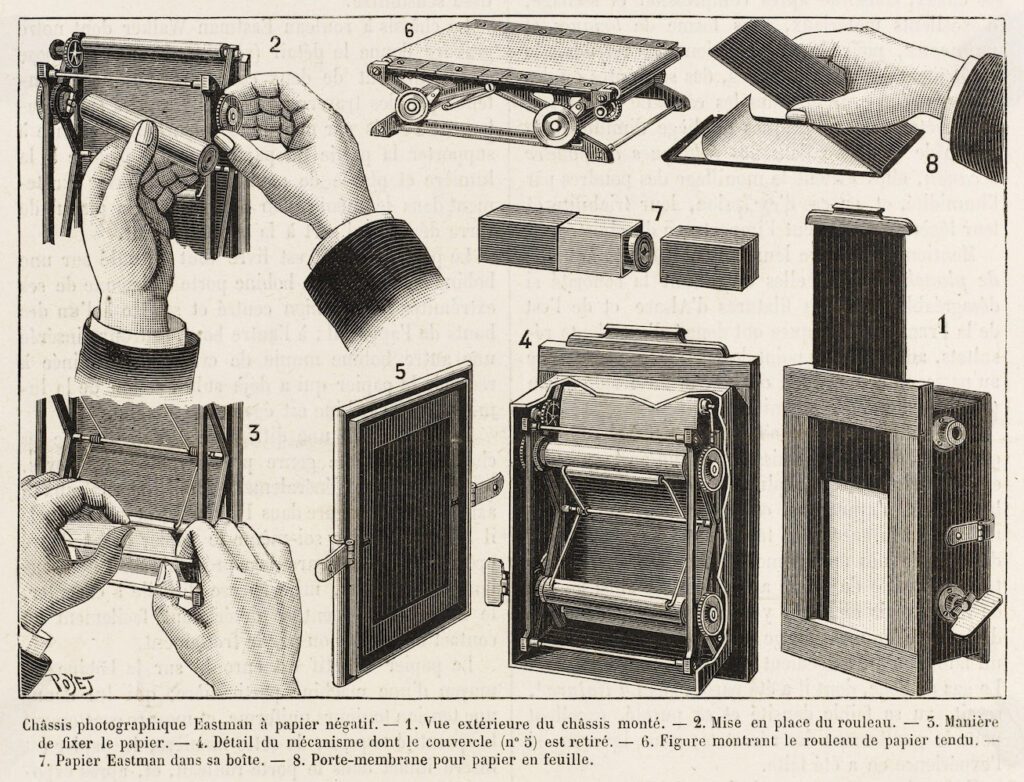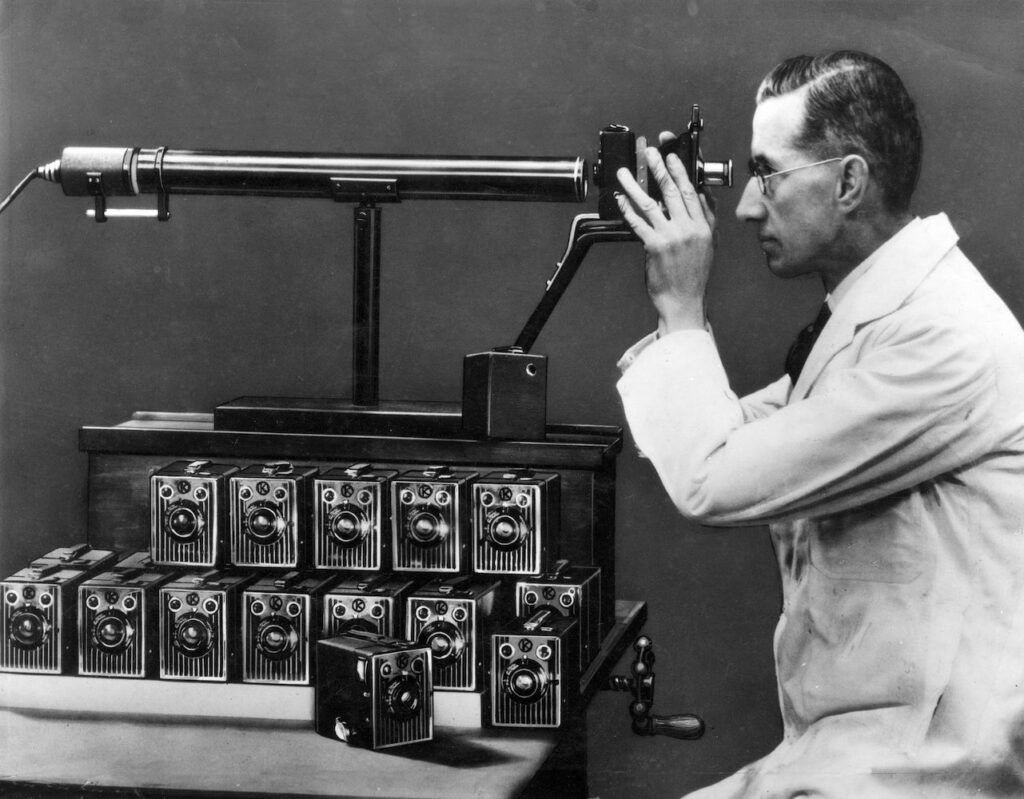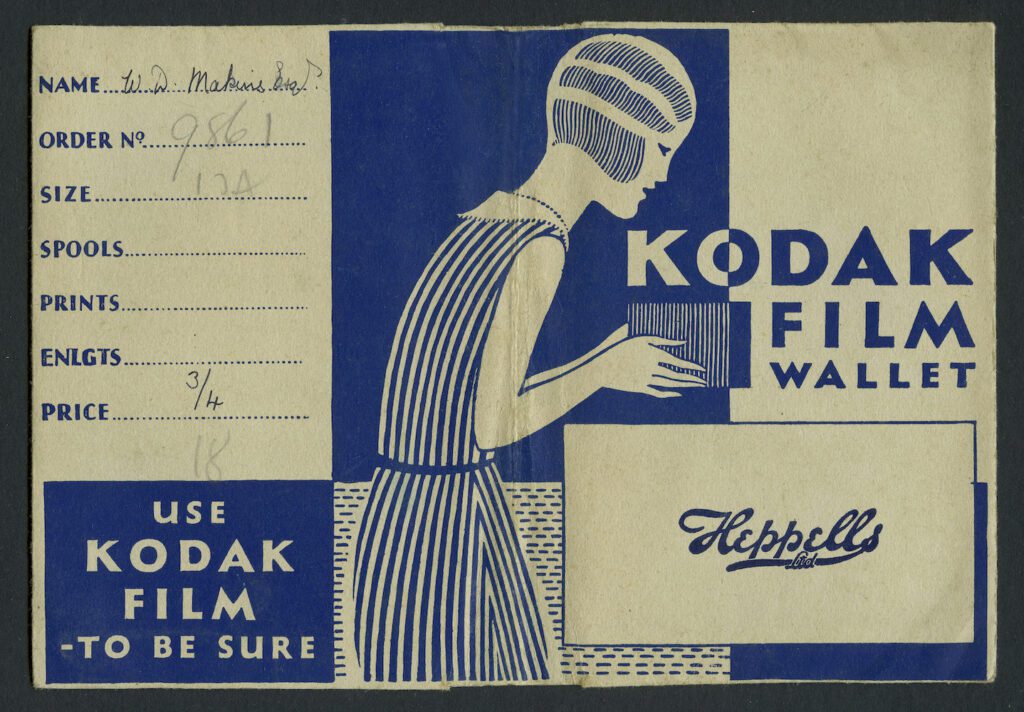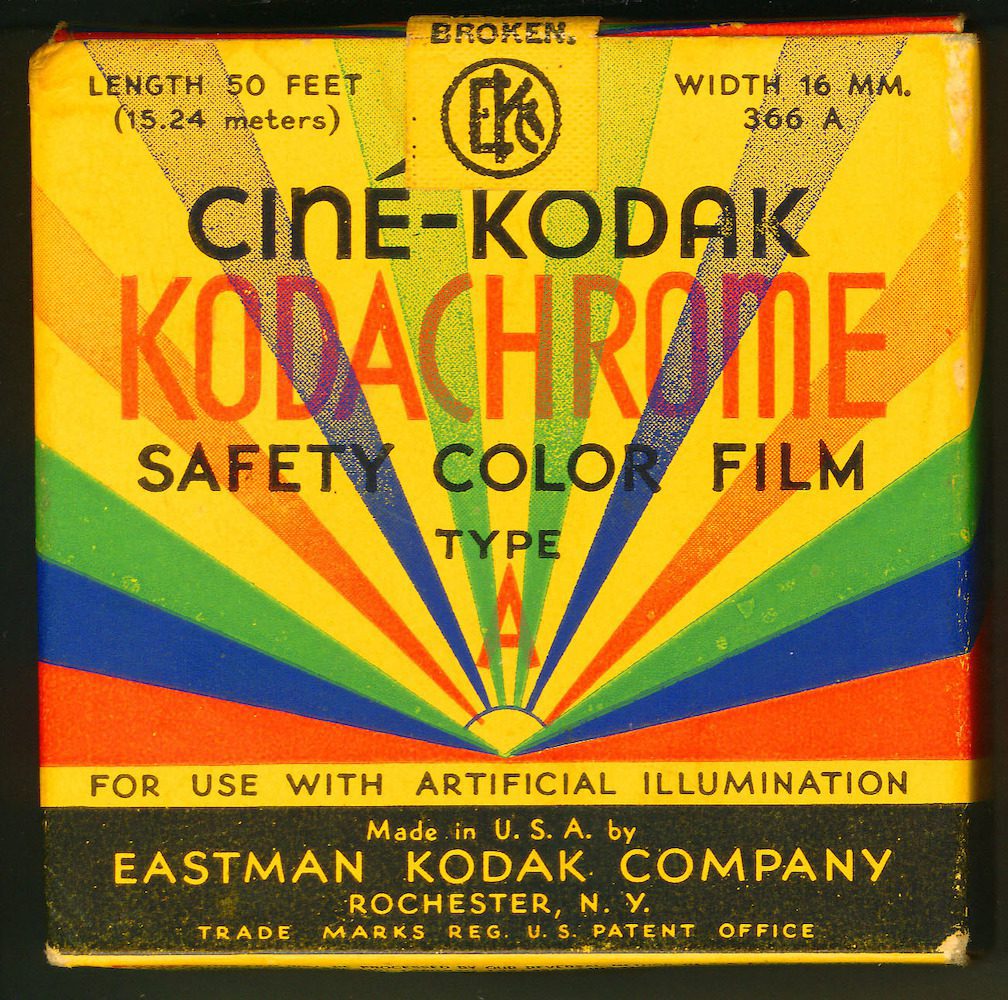
September 4 marks the 135th anniversary of the birth of the Kodak brand and the first film camera, as per patent no. 3888,850 filed in the State of New York by George Eastman.
A thin thread connects this anniversary to the birth of Scala archives, founded in 1953 in Florence, that has been, for the last seventy years, a place of conservation of color photography (with the inevitable Kodak color scale) and a promoter of the fruition of works of art, in color and for everyone.
1888 was a pivotal year for the development of photography as we know it today. On September 4, 1888, George Eastman registered the Kodak trademark and filed a patent for the Kodak No.1 camera, the first camera roll.
To understand the innovation that this camera – as well as the Kodak brand itself – has brought one must think of how photographs were taken and developed before 1888.
The first photographic process, the daguerreotype – named after the French Louis Jacques Mandé Daguerre – was presented to the public in 1839. The daguerreotype was obtained by applying a layer of silver on a copper plate, which, through iodine vapors, would become photosensitive. Exposing it to light for about ten minutes, and then using mercury vapors, the area took on a whitish color. Early examples of photography were thus obtained, although quickly replaced by the new technique of wet collodion (1851).
The wet collodion (nitrocellulose substance) technique consisted of covering a glass plate with the substance diluted in alcohol and ether, to which potassium iodide and cadmium bromide were added. It was then dipped in a silver nitrate substance that made it photosensitive. The plate had to be developed, still moist, in a sulfate solution. This is how the first photographic “negatives”, as we understand them today, were born.
“All these operations had to be carried out quickly, before the collodion dried and became impervious to the solutions required by the process. So the photographer couldn’t be too far from a darkroom,” Beaumont Newhall notes in “History of Photography.”
The subsequent process was that of gelatin and silver salts which was introduced in the 1870s (the first experiments were carried out by Richard Lech Maddox). This method was the catalyst for the social diffusion of photography, determining not only the birth of photographic industries but also that of cinematography. Also known as “dry plates”, it had the advantage of shelf life, since the emulsion of gelatin and alkaline salts combined with silver nitrate was found to have the ability to dry on the chosen support.
In 1879 George Eastman, a photography passionate, developed a machine to coat glass sheets with the gelatinous substance and founded the Eastman Film and Dry Plate Company, which would be later renamed Eastman Kodak, thus giving birth to the brand we know today.
The years between 1881 and 1888 saw the photographic roll come to life thanks to the mind and determination of George Eastman. Eastman experimented for a long time to create flexible rollers that could completely replace the dry plates. In these years he patented the first flexible photographic roll on which later he developed the full-service project of the Kodak No.1 camera.
See here a selection of daguerreotypes and photographic products obtained with techniques prior to the birth of the
Before George Eastman and Kodak No.1, photography was a complicated process, which required specific skills and was not accessible to most. Thus was born the idea of the American entrepreneur: open to an amateur public the practice of photography. He intercepted and stimulated the desire of those who did not have the opportunity to study the processes and buy complex machinery to see their daily life portrayed. 1888 was therefore a revolutionary year for the development of photography as we know it today: a mass product, relatively cheap, intuitive to use.


Eastman’s revolution consisted not only in the creation of a compact camera simple to use – it was enough to press a button, as the famous slogan said – but above all in the use of a roll of film, on which the photosensitive material was sprinkled on paper, which was therefore able to eliminate the use of metal or glass plates, speeding up the photographic process. It was the advent of film cameras.
The Kodak No. 1 cost $25 and was preloaded with a roll of film with 100 potential shots. Furthermore, for $10, it was possible to ship the negatives to Rochester, New York, to be developed. The company would send back the camera loaded with a new film roll, along with the negatives and developed photographs. Kodak advertisements from 1888 also claimed that any amateur could “finish their shots”, develop them themselves, and, if necessary, spare film rolls were sold for $2 each.

Freeing the photographer from the complicated and expensive process of film development, photography becomes more accessible than ever. In capturing everyday moments and memories, Kodak’s distinctive circular snapshots (initially they were circular to avoid the loss of definition at the corners) defined a new style of photography: informal, personal and fun.
The slogan “You Press the Button, We Do the Rest” became popular. For the first time the advertising campaigns involved women and children. The same word Kodak became part of common speech such as: kodaking, kodakers, kodakery.
The enthusiasm for the product and for the company meant that Kodak was able to dominate the market up until the 2000s and the following advent of digital photography.
See here a selection from our archives dedicated to advertising and Kodak related materials.
Experimentation to obtain color photographs had already begun at the end of the nineteenth century and was primarily based on using color separation filters. One of the first successes was the Autochrome of the Lumière brothers: a photographic process based on additive synthesis, which consisted in applying to a glass plate a solution of potato starch dyed red, green, and blue, to which a thin layer of photosensitive emulsion was added. This process produced a negative image that, once reversed, could be projected. Kodak began research on color imaging in its laboratories as early as 1910 experimenting with a series of processes, but none of these proved fully satisfactory until the 30s.
Kodachrome (the first color film) was born from two men both named Leopold: Godowsky Jr. and Mannes, musician scientists who worked at the Kodak facility in Rochester. They spent years perfecting their technique that, in 1935, resulted in a 16mm roll called Kodachrome: three emulsions, each sensitive to a primary color, coated on a single film base.
“The film itself is basically black and white.”
While all color films had dyes placed directly on the film material, Kodachrome dye was not added until the development process. For 20 years, anyone who wanted to develop Kodachrome films had to send them to a Kodak laboratory, where all the processes were carried out.

Its relative ease of use made Kodak film dominant among both professionals and amateurs for most of the twentieth century. With it some of the most important events were recorded for posterity: a color version of the Hindenburg explosion in 1936 was shot in Kodachrome; in 1953 it was used by Edmund Hillary at the top of Mount Everest; and Abraham Zapruder captured the assassination of President Kennedy with 8-mm Kodachrome film in Dallas to name just a few. Kodak allowed women’s magazines and rotogravure to show a world in color.
fter the 2000s, due to digital photography, the general demand for film declined considerably and Kodachrome was discontinued in 2009.
But, before its decline, Kodachrome had been for years an iconic and revolutionizing tool for photographers and amateurs worldwide. One of the pioneers of color photography Gisèle Freund, the French photojournalist and portraitist, shot some of her most famous artwork with a Kodachrome film. Without any schooling Freund mastered the new wave of color photography capturing many among the most famous people of the time: Frida Kahlo, Sylvia Beach, and Henri Matisse to name just a few.
Click here to view a selection of shots by Gisele Freund, author of important color reportages of the twentieth century.
Scala is pleased to represent the copyright of Gisèle Freund through RMN in Italy and UK.
And to underline the influence that Kodachrome has had on photography, the honor and burden of using the last Kodachrome roll of film produced – called “The Last Roll of Kodachrome” – was given to American photographer Steve McCurry, author of the iconic photograph “Afghan Girl”. “Afghan Girl,” the most famous cover of National Geographic magazine, was in fact taken with a Kodachrome film in 1984.
And just like that, with 36 shots, McCurry closed a cycle that lasted almost a century: that of the first color film.
SCALA Istituto Fotografico Editoriale was founded in Florence in 1953, by two young art history students with a passion for photography, John Clark and Mario Ronchetti, encouraged and supported by their famous professor Roberto Longhi. Longhi’s innovative idea was to professionally photograph works of art, including architecture, for the first time in color, and make these images available to the publishing world to encourage the study of works of art. Shortly afterwards Scala added texts by eminent art historians to high-quality color photography and published a series of artist’s monographs in various languages. Thus SCALA – Istituto Fotografico Editoriale was born.
At the time, transparencies were not stable, and several methods were adopted to keep track of possible chromatic alterations of photographic shooting. Among these, the most widespread method was the use of color scales and grayscales – the Kodak Color Control Patches – which were flanked by the work to be photographed and formed a standardized color guide of reference to evaluate color variations over time. Even today, when variations are detected, the technicians of SCALA’s in-house photographic laboratory skillfully restore transparencies and films. The Scala laboratory is still considered one of the most prestigious for the management of color photos.
The choice of the company name is in reference to this systematic adoption of the chromatic scale – scala in italian.
***
In copertina: Photographic print wallet, advertising Kodak Film, and the developers, Heppells Ltd. – E264516